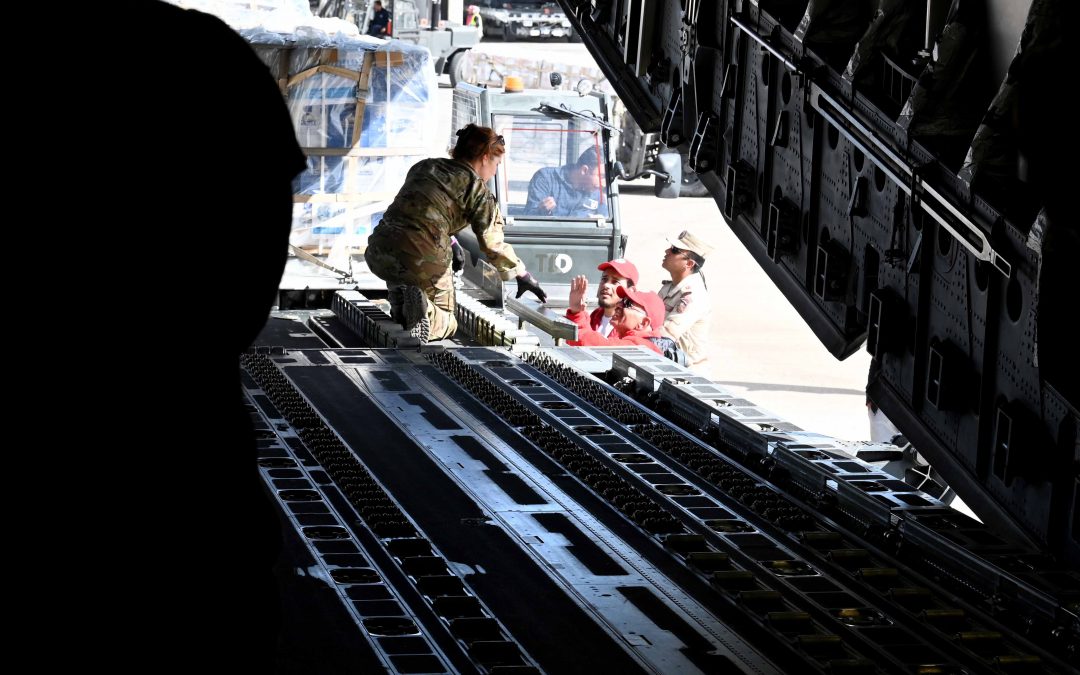WASHINGTON – For the first time since the war in Gaza began, the U.S. military transported aid destined for Gaza, Pentagon spokesman Air Force Brig. Gen. Pat Ryder told reporters on Wednesday.
The humanitarian supply effort, overseen by the State Department’s U.S. Agency for International Development (USAID), included 54,000 pounds of medical supplies, winter clothing, and foods for displaced populations.
“Additional flights are expected in the coming days,” Ryder said, adding that this shipment follows last week’s delivery of over 500,000 pounds of U.S. food assistance to Gaza.
The delivery aircraft, a U.S. Air Force C-17, one of the military’s largest cargo aircraft, arrived Tuesday in Egypt. Supplies were expected to be trucked into Gaza, where the United Nations will handle distribution, Ryder said.
The shipment comes amidst a temporary ceasefire between Israel and Hamas. Both sides exchanged hostages in the six days since the ceasefire began.
U.S. Secretary of State Antony Blinken was expected to return to Israel later this week, in hopes of brokering an extension of the ceasefire between Israel and Hamas. The Biden administration pledged $100 million of support of Palestinian humanitarian assistance last month.
“It is both urgent and imperative that lasting mechanisms be put in place to significantly accelerate the pace of sustained aid into Gaza,” read a recent press release from USAID. “The United States continues to coordinate with the Governments of Israel and Egypt, the UN, and other international actors to move humanitarian assistance and personnel into Gaza.”
In the first seven weeks of the war, severe destruction from Israeli bombings forced almost two million Palestinians to evacuate their homes in Gaza and flee south. The mass evacuation has prompted Biden administration officials to advise Israeli military officials that future strikes that occur following the ceasefire must be more precise to try and tamp down on growing civilian casualty rates. At a size of just 140 square miles, Gaza is particularly densely populated, making airstrikes even more lethal.
Over 13,000 Palestinians have died since the war began in October, along with over 100 UN relief workers, according to CNN.
With the bombings paused between Israel and Hamas, the region also became less violent for the 900 U.S. troops in Syria and the 2500 in Iraq. Iranian-backed militants had been frequently attacking U.S. military bases in Syria and Iraq since the Gaza war began.
Attacks on U.S. bases by Iranian-backed groups spiked beginning on October 7. Those bases were attacked over 70 times. Since the ceasefire between Israel and Hamas began there have been no attacks. No troops were killed, but at least 60 troops have reported traumatic brain injuries. Ryder noted on Tuesday that those numbers could increase over time, due to the delayed onset of some injuries.
The region was not completely peaceful since the ceasefire started. When asked about weekend reports of missiles fired at two U.S. ships off the Yemen coast, Ryder declined to speculate on the motivations of the Houthi, the militant group responsible for the strike.
”We know that there was at least one missile,” Ryder said. “And we also at this point assess that the vessels, the Mason and the Central Park, were not the intended targets.”
Ryder added that the missiles landed 10 nautical miles away from the ships.

